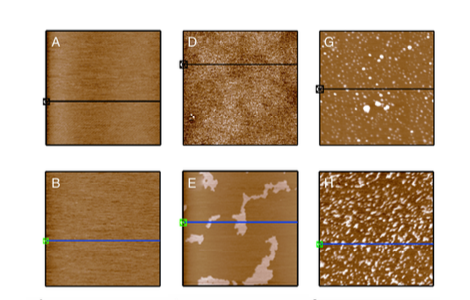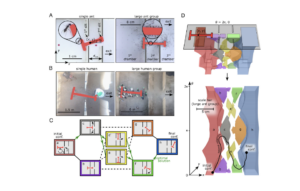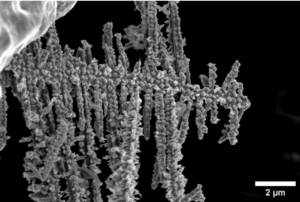Découverte majeure ! L'Université Ben Gourion (Israël) montre l'origine embryonnaire des troubles bipolaires

[:fr]Des chercheurs ont récemment montré les origines embryonnaires des fluctuations de l’humeur, qu’il s’agisse de la maniaco-dépression ou des troubles bipolaires. Israël Science Info tient à souligner l’importance majeure de cette découverte réalisée par le Dr Claude Brodski du centre de neurosciences de l’Université Ben Gourion du Néguev en Israël et de ses collègues à l’Institut de psychiatrie Max-Planck et à l’Université Ludwig-Maximilian de Munich en Allemagne et publiée dans la prestigieuse revue Neuropharmacology.
Les troubles bipolaires toucheraient 1 à 2 % de la population. Plus connus du grand public sous le terme « maniaco-dépression », ils se caractérisent par l’alternance de périodes euphoriques associées à une hyperactivité physique et psychique et de périodes de dépression sévère. Une célèbre actrice américaine, Catherine Zeta-Jones, a mis en lumière cette maladie en révélant au grand public ses troubles bipolaires et qu’elle avait d’elle-même demandé à être internée pour suivre un traitement adapté à sa pathologie.
Le risque suicidaire est élevé, notamment chez les patients non traités. On estime que 25 à 50 % des bipolaires feront au moins une tentative de suicide dans leur vie. Les causes de la maladie sont mal connues. Comme dans la plupart des pathologies psychiatriques, elles incluent une dimension génétique (risque de 10 %, soit 5 à 10 fois plus qu’en population générale, si un des parents est atteint) et des causes environnementales. La maladie est traitée par des thymorégulateurs (médicaments régulateurs de l’humeur). Mais ces médicaments, dont le plus connu est le lithium, ne sont pas dépourvus d’effets secondaires. Par ailleurs, ils ne sont pas efficaces sur tous les patients.
En analysant des milliers d’individus sains et de patients bipolaires, Brodski et ses collègues ont découvert que des variations de certaines voies génétiques régulant le développement embryonnaire des cellules nerveuses produisant de la dopamine et la sérotonine sont associées à ce trouble. Il s’est intéressé au rôle au cours de l’embryogenèse, du facteur de transcription Otx2 qui dirige la spécification des neurones dopaminergiques et sérotoninergiques. Il a ensuite étudié une lignée de souris pour lesquelles le gène qui régule ce développement embryonnaire est muté. Il surexprime OtX2 ce qui conduit à une augmentation du nombre de neurones dopaminergiques et une diminution du nombre de neurones sérotoninergiques. L’observation de ces souris a montré qu’elles manifestaient un comportement social proche de celui retrouvé chez les patients bipolaires. Enfin l’utilisation des traitements de la maniaco-dépression chez nos souris (lithium, carbamazépine), a permis d’atténuer les troubles ce qui confirme bien le lien entre cette mutation et la maladie. « Pour la première fois, nous avons fourni des indications sur les causes endogènes des fluctuations de l’humeur » note le Dr Brodski. Par ailleurs, ces expériences montrent également que le modèle murin mis au point peut être utile pour tester de nouvelles substances destinées à soulager les troubles bipolaires.
Publication dans Neuropharmacology[:en]Ben-Gurion University of the Negev Researcher Dr. Claude Brodski and colleagues from the Max-Planck Institute of Psychiatry and Ludwig-Maximilian University of Munich in Germany have recently shown the embryonic origins of mood fluctuations and its implications for bipolar disorder in a paper published in the prestigious journal Neuropsychopharmacology.
The efficacy of current drugs used for the treatment of bipolar disorder is unacceptably low and in the last few decades no conceptually novel therapeutics have been introduced to treat this common and devastating disease. The lack of understanding of the neurobiological underpinnings of mood fluctuations, a hallmark of bipolar disorder, and the lack of appropriate animal models, significantly contribute to this problem.Analyzing DNA data from thousands of healthy individuals and patients Brodski and his colleagues discovered that variations of genetic pathways regulating the embryonic development of nerve cells producing dopamine and serotonin are associated with bipolar disorder. A mouse mutant line, in which a gene is mutated that regulates these genetic pathways show fluctuations in different behaviours including activity, anxiety, aggression and sociability, as observed in bipolar disorder. Behavioural changes of mutants were ameliorated by drugs used for the treatment of bipolar disorder.
“For the first time, we have provided insights into the causes of endogenous mood fluctuations. Moreover, the fact that drugs used for the treatment of bipolar disorder improved behavioural abnormalities of mutants indicate that these animals are a valid model to identify new drug targets and develop new therapeutics,” says Brodski.
Brodski is the head of the Laboratory for Developmental and Behavioural Neurogenetics in the Department of Physiology and Cell Biology. He is also a member of the Zlotowski Center for Neuroscience and the School of Medicine at BGU.
The paper is entitled “Abnormal Development of Monoaminergic Neurons Is Implicated in Mood Fluctuations and Bipolar Disorder.” Brodski’s co-authors include: Marin M Jukic, Michal Bar, Gal Becker, Vukasin M Jovanovic, and Ksenija Zega of BGU, and Tania Carrillo-Roa and Elisabeth B Binder of the Max-Planck Institute. Carrillo-Roa is also a member of the Ludwig-Maximilian University of Munich.
Publication in Neuropharmacology [:]







